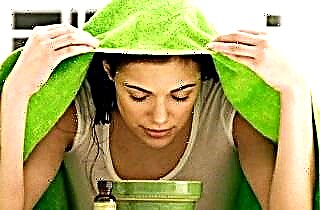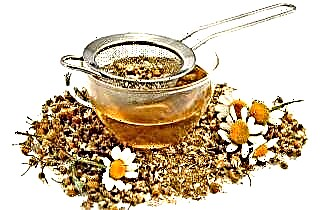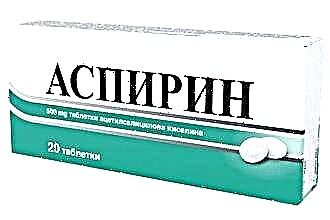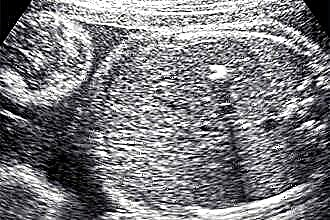Sinusitis can be either an independent disease or develop against the background of acute rhinitis. In the first case, inflammation of the mucous membrane of the nasal sinuses occurs. Inhalation for sinusitis is an effective therapeutic agent. They promptly liquefy mucus in the sinuses and facilitate its early removal from the body. Inhalation significantly reduces the risk of various dangerous complications, including hemisinusitis (inflammation in several paranasal sinuses).
The key advantage of inhalation is that the drug granules only target the affected areas. Unlike drug therapy, they bypass the gastrointestinal tract, which significantly reduces the negative impact on the body.
Indications and contraindications
 Inhalation with sinusitis can be done only when the patient is not in serious condition. If the patient has an elevated temperature, it should be discarded. In addition, it is not recommended to use this method in case of complete blockage of the nasal passages. Inhalation will only harm, causing more intense mucus drainage. In this case, drops are prescribed to narrow the vessels, they quickly relieve puffiness, after which inhalations can be performed.
Inhalation with sinusitis can be done only when the patient is not in serious condition. If the patient has an elevated temperature, it should be discarded. In addition, it is not recommended to use this method in case of complete blockage of the nasal passages. Inhalation will only harm, causing more intense mucus drainage. In this case, drops are prescribed to narrow the vessels, they quickly relieve puffiness, after which inhalations can be performed.
Sinusitis is a dangerous disease. If you do not start treatment in a timely manner (or do the wrong thing yourself), it transforms into an acute form with the formation of polyps. Then you cannot do without surgical intervention.
In order not to harm the patient, one should remember the following pathologies in which the inhalation procedure is prohibited:
- asthma;
- heart defects;
- intolerance to the components of drugs;
- severe form of somatic diseases;
- increased body temperature;
- severe arrhythmia;
- recently suffered a heart attack or stroke;
- frequent flow of blood from the nose.
If the composition of inhalation solutions contains oily components, you should consult with your doctor about the appropriateness of their use. Children often have intolerance to such components, which causes allergic and pathological reactions.
Types of inhalation procedures
There are four main types of inhalation that can be used to treat sinusitis:
- Steam is the most common type of inhalation. Most of them are used at home and involve inhaling hot steam. There are no particularly complicated rules for carrying out such a procedure. It is necessary to bend over a container of hot water, cover yourself with a towel and inhale the steam (steam inhalation is prepared on the basis of medicinal plants, soda and even ordinary potatoes).
 Cold inhalations with onions, menthol, or horseradish can also be used to combat sinusitis. Phytoncides, which are part of the above products, effectively destroy pathogens of the disease and eliminate foci of infection. Grind food and inhale the aroma that comes from them. In addition, regular walks in the coniferous forest or along the seashore (speleotherapy) can also be attributed to cold inhalations.
Cold inhalations with onions, menthol, or horseradish can also be used to combat sinusitis. Phytoncides, which are part of the above products, effectively destroy pathogens of the disease and eliminate foci of infection. Grind food and inhale the aroma that comes from them. In addition, regular walks in the coniferous forest or along the seashore (speleotherapy) can also be attributed to cold inhalations.- Inhalation with nebulizers - special household appliances. This is the most effective and efficient type of inhalation, which allows you to quickly get rid of sinusitis at the initial stage. Medicines have a healing effect on the body, which are crushed into small granules and act directly on the infectious focus. As medicines for inhalation, anti-inflammatory drugs, vasoconstrictors, combined and even antibiotics can be used.
- In addition, you can use the so-called herbal medicine. In this case, medicinal herbs are used to prepare a medicinal solution for inhalation. This can be sage, St. John's wort, serpentine roots, calendula, chamomile, eucalyptus, and so on. The active substances of these plants help relieve inflammation of the mucous membranes and have a calming effect on the entire body. But just before inhalation, you need to make sure that the patient is not allergic to this or that medicinal plant.
Proven recipes
Inhalation is a very effective remedy, the effectiveness of which is recognized even by doctors. As for the drugs for such a procedure, most of them are prescribed by a doctor. Typically, mucolytics, antiseptic solutions, and antibiotics are used to treat sinusitis. But if desired, the basis for inhalation can be made independently at home. Most popular recipes:
 You need to take one tablespoon of St. John's wort and celandine. Add two tablespoons each of yarrow and chamomile. Next, the herbs are poured with a glass of hot water (200-250 milligrams) and infused for at least 40 minutes.
You need to take one tablespoon of St. John's wort and celandine. Add two tablespoons each of yarrow and chamomile. Next, the herbs are poured with a glass of hot water (200-250 milligrams) and infused for at least 40 minutes.- It will be required to mix the leaves of plantain, mint and celandine in equal proportions. Pour a glass of boiling water over the herbs and let it brew for one hour.
- One glass of clean water is needed. Add two drops of pine, eucalyptus and mint essential oil to it. Inhale immediately after stirring. This is the so-called cold inhalation.
- Take in equal proportions the leaves of raspberry, mint, currant and hawthorn flowers (you can take two tablespoons). Then you need to pour the mixture with 300 g of boiling water and leave for at least 30 minutes (as long as possible).
- The simplest and most time-tested recipe. Wash the potatoes and boil them along with the skins. Cover yourself with a towel and breathe over the steam for at least 10 minutes.
If this procedure is performed using portable nebulizers, it lasts from 8 to 10 minutes. This applies to adults. Children are advised to inhale the active substances for 5-7 minutes. The course itself is no more than 7 days.
Prophylaxis
Let us remind once again that inhalations are effective only in the initial stages of the disease. It is not recommended to use them in acute forms of sinusitis. According to doctors, antibiotics and physical therapy will be preferable in this case. Prolonged sinusitis in an aggravated form should be treated with irrigation and surgical puncture (puncture of the affected paranasal sinus).
 To achieve maximum inhalation efficiency, adhere to the following important principles:
To achieve maximum inhalation efficiency, adhere to the following important principles:
- observe optimal sleep and nutrition;
- refrain from walking on the street;
- completely eliminate drafts;
- do not overwork;
- do not engage in intense physical activity;
- use the rule of drinking plenty of fluids;
- if after a week's course of inhalations there is no improvement, give them up.
At the moment, there are many different ways to get rid of sinusitis, and inhalation is just one of them. Remember, this is not a key technique in and of itself. This is a useful supplement that will help significantly increase the effectiveness of your general rehabilitation course. It is in demand only in the early stages of the development of the disease.

 Cold inhalations with onions, menthol, or horseradish can also be used to combat sinusitis. Phytoncides, which are part of the above products, effectively destroy pathogens of the disease and eliminate foci of infection. Grind food and inhale the aroma that comes from them. In addition, regular walks in the coniferous forest or along the seashore (speleotherapy) can also be attributed to cold inhalations.
Cold inhalations with onions, menthol, or horseradish can also be used to combat sinusitis. Phytoncides, which are part of the above products, effectively destroy pathogens of the disease and eliminate foci of infection. Grind food and inhale the aroma that comes from them. In addition, regular walks in the coniferous forest or along the seashore (speleotherapy) can also be attributed to cold inhalations. You need to take one tablespoon of St. John's wort and celandine. Add two tablespoons each of yarrow and chamomile. Next, the herbs are poured with a glass of hot water (200-250 milligrams) and infused for at least 40 minutes.
You need to take one tablespoon of St. John's wort and celandine. Add two tablespoons each of yarrow and chamomile. Next, the herbs are poured with a glass of hot water (200-250 milligrams) and infused for at least 40 minutes.

